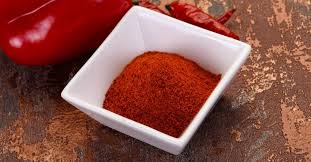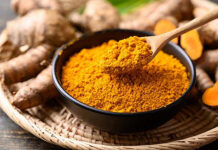You have to love paprika!
It’s one of those unusual spices that was actually grown in North America, central Mexico to be precise, and cultivated here before spreading to the old world back in the 1500s. That’s when Spain discovered it and used it to add color and a distinct flavor to all kinds of wonderful dishes made even better with the taste and color of this little red, yellow or orange pepper product.
From Spain, paprika spread throughout Europe, and when it got to Hungary, it was kind of adopted by that nation’s cuisine to the point today Hungary is a major source of paprika and is the nation most often associated with it.
It’s because it has been so popular there since the 19th century that its name comes from the Hungarian, paprika.
As a spice, it is considered sweet as compared to its cousin, the hot pepper. The powder is generally made from dried and ground red peppers, but the kind with the milder and thinner flesh than their spicy cousins. The powder can be made, however, in any range from mild to hot, but it is most recognized as a sweet spice made from the pericarp, the outer skin with most of the seeds, which are the really spicy apart, removed and reserved for those hot pepper sauces..
The spice can be used in a diverse variety of culinary delights, from meat stews and soups to cream sauces, egg dishes and casseroles. Try sprinkling some on mac and cheese! Or on any finished dish to bring out a bit more flavor. Heat it with oil to bring out even more flavor, or use it in hummus.
Paprika is loaded with vitamin A, the vitamin that provides so much nutrient for the eyes, and is also recognized by many physicians as a cancer preventive. A teaspoon of paprika…easy to take in a day simply by all that sprinkling, accounts for more than 20 percent of what everyone should have of Vitamin A in a day.
As a beauty accent in presentations, it’s the bright red color that makes deviled eggs so much more attractive; it’s all those carotenoids that do that; for taste, it adds a bit of sweetness to rice or soups. It can be mixed with cayenne pepper to add more spice to a dish, and it can be blended with numerous other spices for blends and rubs for marinades or sauces.
It’s a main ingredient in chicken paprikash, the Hungarian national favorite Goulash, and paella. There’s more flavor to paprika if you add it near the end of cooking, rather than dulling the flavor by too much heat.
If there is any one disadvantage of paprika, it is that its flavor will dull, and in some cases actually spoil with age. So it’s better to buy it in small quantities and skip that savings on a large jar. Store it in a cool dark place with a tight fitting lid.
Try this recipe for Chicken Paprikash
3 or 4 lbs. chicken thighs and drumsticks
1 tablespoon oil
1 tablespoons butter
1 large onion, peeled and diced
3 cloves garlic, peeled and minced
2 tablespoons paprika
2 tablespoons flour
1 large ripe tomato, chopped
1 cup chicken broth,
¾ cup sour cream (optional)
Heat oven to 400 degrees. Season chicken pieces with salt and pepper. In a Dutch over or oven-safe sauté pan, heat oil and butter over high flame, until butter foams. Sear chicken in batches, skin-side down, about 5 to 7 minutes, until crispy; turn and repeat another 5 to 7 minutes. Remove chicken.
Pour off most of the fat , return to medium heat, and add onion. Cook, stirring frequently along with any leftover bits of chicken skin, until the onion has softened and translucent, about 5 minutes. Add garlic, and stir again, cooking it until it has softened, another 3 minutes. Combine paprika with flour and add to mixture, appreciate the fragrance of the spice, as you cook for about five minutes.
Add tomatoes and broth, whisk until smooth; put chicken, skin side up back in the pot, cooking another 25 to 30 minutes, until chicken is cooked through.
To complete the dish, cook egg noodles, drain and toss in a bowl with butter. Serve with chicken on top, and if desired, add 1 Cup sour cream to sauce before pouring over finished dish.



